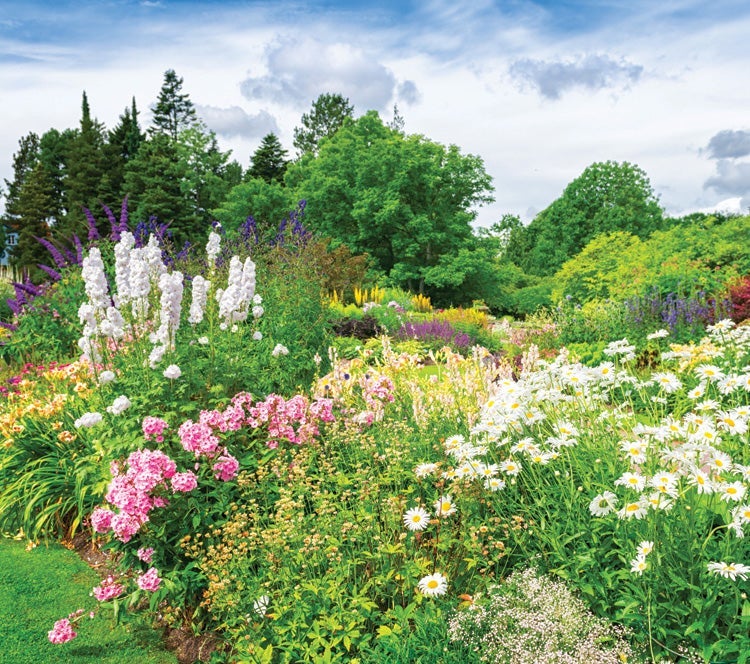the four elements
 Great gardens don’t happen by accident. They are the result of good planning that relies on the key elements of design: unity and harmony, proportion and scale, mass and space, and texture and pattern. A good designer will effectively use these elements to make a pleasing composition.
Great gardens don’t happen by accident. They are the result of good planning that relies on the key elements of design: unity and harmony, proportion and scale, mass and space, and texture and pattern. A good designer will effectively use these elements to make a pleasing composition.
 Great gardens don’t happen by accident. They are the result of good planning that relies on the key elements of design: unity and harmony, proportion and scale, mass and space, and texture and pattern. A good designer will effectively use these elements to make a pleasing composition.
Great gardens don’t happen by accident. They are the result of good planning that relies on the key elements of design: unity and harmony, proportion and scale, mass and space, and texture and pattern. A good designer will effectively use these elements to make a pleasing composition.HARMONY AND UNITY
There are many ways to achieve a sense of harmony and unity in a landscape. Start by growing healthy plants. A garden with plants that are struggling to survive is an uncomfortable place, lacking in harmony. Group plants that have similar needs. It is jarring to see plants that require moisture growing with ones suited to dry conditions, or sun lovers paired with shade seekers. Harmonize the garden with its surroundings.
Echo an architectural detail from your house in the garden to help create a cohesive whole. Use materials in the garden that are consistent with the house. Repeat color or planting themes in different parts of the garden to create visual unity. Patterns and shapes repeated throughout a garden also provide pleasing rhythms that unify.
PROPORTION AND SCALE
Put a large a couch in a small room and it will look enormous. The same couch in a large room looks quite small. The phenomenon at work is scale. Any object will look larger or smaller, depending on the relative size of its surroundings. The same principles of scale and proportion apply outdoors. Be sensitive to the size of your space, and design accordingly.
A common mistake people make in small gardens is to have too many undersize features because they think the pieces are in scale to the space. Instead of making the garden feel bigger, it looks busy and lacks focus. Plant one tree or specimen shrub as an important statement in a small garden, and then use that plant as a reference, relating the scale and proportion of the rest of the plantings and ornaments to it.
A vertical element in a small garden, such as a tree, trellis, or arbor, will help distract from the close boundaries of the property.
MASS AND SPACE
Massive plants, especially if their colors are dark, take up more space in the garden both physically and visually. These plants have mass, and are important to define and fill space as well as to provide resting places for the eye in a landscape that is busy with plenty of floral and other ornamental interest. They are like punctuation marks, providing moments of rest and giving form to the design.
The Four Elements
In winter, when all the frills and distractions of summer’s bounty are removed from the garden, you can best judge whether your garden has adequate mass. If your design is well done with enough mass, the garden will be interesting even in this bare state.
The other source of visual rest in a garden is space. An expanse of patio, a change in level, a swath of lawn, a reflecting pool, and an uninterrupted view are all ways to provide an open, horizontal break in the design.
An ideal design is a pleasing mix of mass and space. If there is too much mass, the garden will appear heavy and dark. If there is too much horizontal space, the garden will feel empty.
TEXTURE, PATTERN, AND COLOR
Patterns in gardens are primarily provided by the physical layout. Whatever the pattern, whether symmetrical and ordered for a formal garden or an abstract pattern for an informal design, it will establish the essential character of the garden. On a smaller scale, you can create additional patterns in many ways. Laying bricks or stones in special designs is an obvious option.
Foliage is another source of texture. Large-leaf plants are bold in texture, creating a strong, assertive look; small-leaf plants appear more delicate. Experiment by combining contrasting textures to create a balanced and visually stimulating display.
Flower form also contributes to texture in the garden. The most interesting designs combine different shapes and textures, including round heads; tall, pointed spires; airy sprays of small blossoms; umbrella-shaped blooms; and tiny petal flowers.
For color in the garden, look beyond flowers to foliage. Take advantage of the incredible range of hues in yellow, red, blue, and purple that are found in leaves. For added interest, opt for variegated leaves that combine two or more of the possible colors.
By effectively using the basic principles of design, you can create a garden that evokes delightful tensions between restful and stimulating; one that is harmonious without being repetitive and boring. Aim to make a garden that is balanced and unified, while at the same time surprising. But most importantly, design your garden so it reflects your own personality.
WRITTEN BY CATRIONA TUDOR ERLER
Photography provided by ©iStockphoto.com/swedewah.